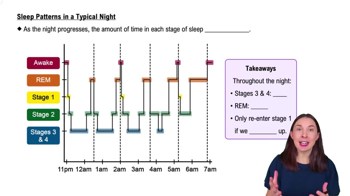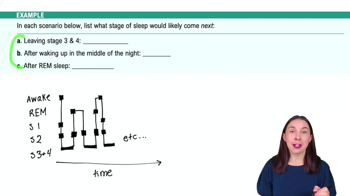Table of contents
- 1. Introduction to Psychology1h 43m
- 2. Psychology Research2h 20m
- 3. Biological Psychology2h 41m
- 4. Sensation and Perception28m
- 5. Consciousness and Sleep32m
- 6. Learning41m
- 7. Memory34m
- 8. Cognition37m
- 9. Emotion and Motivation35m
- 10. Developmental Psychology33m
- 11. Personality48m
- 12. Social Psychology41m
- 13. Stress and Health41m
- 14. Psychological Disorders44m
- 15. Treatment47m
5. Consciousness and Sleep
Sleep
Struggling with Psychology?
Join thousands of students who trust us to help them ace their exams!Watch the first videoMultiple Choice
In Stanley Schachter and Jerome Singer's classic study of emotion, volunteers were injected with epinephrine, a drug that
A
causes people to feel angry, then happy.
B
causes the same kind of physiological arousal that occurs during a strong emotional reaction.
C
causes people to feel angry.
D
has a calming effect after a strong emotion passes.
 Verified step by step guidance
Verified step by step guidance1
Understand the context of Schachter and Singer's study, which is about the two-factor theory of emotion. This theory suggests that emotion is based on two factors: physiological arousal and cognitive label.
Recognize that epinephrine is a hormone that causes physiological arousal, similar to what one might experience during a strong emotional reaction.
Identify that the study involved observing how participants interpreted their physiological arousal when they were not informed about the effects of the injection.
Consider that the participants' emotional responses (feeling angry or happy) were influenced by the context and the information provided to them, demonstrating the cognitive labeling aspect of the theory.
Conclude that the correct interpretation of the study is that epinephrine causes the same kind of physiological arousal that occurs during a strong emotional reaction, which is then interpreted by the individual based on situational cues.

 3:25m
3:25mWatch next
Master Circadian Rhythms with a bite sized video explanation from Hannah Gordils
Start learningRelated Videos
Related Practice


































































































![Race, Genes and IQ Differences | Bret Weinstein [Mini Clip]](https://img.youtube.com/vi/IztL_m3pd70/mqdefault.jpg)



































































































